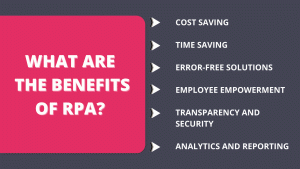Virtual workforces make great contributions to companies. We will try to explain the virtual workforce and its benefits in this article.
According to IRPAAI, Robotic Process Automation (RPA) is a technology that enables company professionals to set computer software or a “robot”. These robots collect and analyze current applications for processing transactions, transforming data, triggering replies, and connecting with other digital systems. What you can do with RPA, a virtual workforce of software robots that perform these tasks is as limitless as your imagination.
RPA robots reduce costs and increase productivity by doing a repetitive job done within the framework of certain rules. Just like a person working at a desk, but faster and without errors. RPA is becoming increasingly popular lately, thanks to its ability to influence business results in this way. We are hearing the definition of the virtual workforce more often.

What Are The Benefits Of RPA
There are several benefits of using RPA. You can positively impact in more than one area for example cost-saving, time-saving, error-free solution, etc.

Virtual Workforce And Artificial Intelligence (AI)
It is really important that customers, RPA developers, and every employee working in RPA companies understand the connection between Virtual Workforce (RPA) and Artificial Intelligence (AI) to understand the job description well.
It is not possible to make definitions such as ”RPA equals AI” or ”AI equals RPA”. However, it can be said that it is obvious that excellent results can be achieved in processes where RPA and AI cooperate.
Due to its nature, RPA technology makes it possible to add advanced AI capabilities to robots. For example character and image recognition, performing various operations on this recognition state, machine learning models, etc. Bringing these artificial intelligence capabilities to virtual workers has a powerful counterpart in the real world. Thanks to these capabilities and RPA technology, a robot can do such things easily.
- Understanding filtered data within a document,
- Recognizing and understanding the visuals on the screen and reporting as a result,
- Screen visualization
The Powerful Impact Of The Virtual Workforce On Digital Transformation
Currently, digital transformation is one of the buzzwords frequently heard as businesses have to be more intertwined with technology. As a result, they start to keep up with the times. McKinsey defines digital transformation as “an effort to enable existing business models by integrating advanced technologies” in an article. Intense project development studies are seen in almost all sectors to adapt to digital transformation.
RPA technology, which we define as a virtual workforce, can provide solutions to many complex systems that require repetition and need to be interconnected. As a result, a title comes to mind, which reads digital transformation and virtual workforce side by side.
People who provide services in many fields such as finance, insurance, health, legal, manufacturing, banking, and utilities are busy with this complex business almost every day.

It is possible to talk about the satisfying impact of RPA software on digital transformation. Thanks to the time it has gained in these areas by creating a virtual workforce and the efficiency it has increased. Visionary companies, who want to participate in digital transformation and parallelize their work with the era, start this transformation journey with the virtual workforce (RPA), allowing them to gain a valuable advantage over their competitors.
To Take Advantage Of RPA
